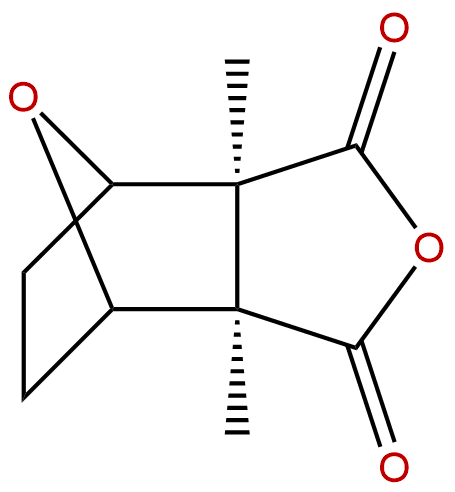Cantharidin Descrtption
Product name: Cantharidin
Synonym name: Cantharides camphor; Cantharone
Catalogue No.: BP0309
Cas No.: 56-25-7
Formula: C10H12O4
Mol Weight: 196.202
Botanical Source: Lytta vesicatoria
Physical Description:
Type of Compound: Monoterpenoids
Purity: 95%~99%
Analysis Method: HPLC-DAD or/and HPLC-ELSD
Identification Method: Mass, NMR
Packing: Brown vial or HDPE plastic bottle
Storage: Store in a well closed container, protected from air and light. Put into refrigerate or freeze for long term storage.
Whenever possible, you should prepare and use solutions on the same day. However, if you need to make up stock solutions in advance, we recommend that you store the solution as aliquots in tightly sealed vials at -20℃. Generally, these will be useable for up to two weeks.
The product could be supplied from milligrams to grams
Inquire for bulk scale.
Description:
Cantharidin, a natural toxicant of blister beetles, is a strong inhibitor of protein phosphatases types 1 (PP1) and 2A (PP2A), and is a novel and potent multidrug resistance (MDR) reversal agent. Cantharidin has anti-tumor activity, it causes oxidative stress that provokes DNA damage and p53-dependent apoptosis, it impairs cell migration and invasion by suppressing MMP-2 and -9 through PI3K/NF-κB signaling pathways.
References:
Anticancer Res. 2015 Feb;35(2):795-804.
Cantharidin induces DNA damage and inhibits DNA repair-associated protein expressions in TSGH8301 human bladder cancer cell.
Cantharidin is an active component of mylabris, which has been used as a traditional Chinese medicine. Cantharidin has been shown to have antitumor activity against several types of human cancers in vitro and in animal models in vivo.
METHODS AND RESULTS:
We investigated whether Cantharidin induces DNA damage and affects DNA damage repair-associated protein levels in TSGH8301 human bladder cancer cells. Using flow cytometry to measure viable cells, Cantharidin was found to reduce the number of viable cells in a dose-dependent manner. Comet assay, 4',6-diamidino-2-phenylindole (DAPI) staining and DNA gel electrophoresis were used to measure DNA damage and condensation; the results indicated that Cantharidin induced DNA damage (comet tail), DNA condensation (white DAPI staining) and DNA damage (DNA smear). Results from western blotting showed that Cantharidin inhibited the expression of DNA-dependent serine/threonine protein kinase, poly-ADP ribose polymerase, phosphate-ataxia-telangiectasia and RAD3-related, O-6-methylguanine-DNA methyltransferase, breast cancer susceptibility protein 1, mediator of DNA damage checkpoint protein 1, phospho-histone H2A.X, but increased that of phosphorylated p53 following 6 and 24 h treatment. Confocal laser microscopy was used to examine the protein translocation; Cantharidin suppressed the levels of p-H2A.X and MDC1 but increased the levels of p-p53 in TSGH8301 cells.
CONCLUSIONS:
In conclusion, we found that Cantharidin-induced cell death may occur through the induction of DNA damage and suppression of DNA repair-associated protein expression in TSGH8301 cells.
Cancer Lett. 2008 Dec 8;272(1):102-9.
Cantharidin reverses multidrug resistance of human hepatoma HepG2/ADM cells via down-regulation of P-glycoprotein expression.
Multidrug resistance (MDR) is a serious obstacle encountered in cancer treatment.
METHODS AND RESULTS:
In this study, we established an in vitro multiple drug resistant HepG2 cell line (HepG2/ADM), and characterized its MDR. This model was used to screen potential candidate chemosensitisers from over 200 purified naturally occurring compounds extracted from plants and animals. Cantharidin was found to have a significant reversal on MDR in our model. Further, our results showed that Cantharidin could significantly inhibit P-gp (P-glycoprotein) expression, mRNA transcription, as well as MDR1 promoter activity.
CONCLUSIONS:
These results suggest that Cantharidin is a novel and potent MDR reversal agent and may be a potential adjunctive agent for tumor chemotherapy.
FEBS Lett. 1993 Sep 20;330(3):283-6.
Cantharidin, another natural toxin that inhibits the activity of serine/threonine protein phosphatases types 1 and 2A.
Cantharidin, a natural toxicant of blister beetles, is a strong inhibitor of protein phosphatases types 1 (PP1) and 2A (PP2A).
METHODS AND RESULTS:
Like okadaic acid, Cantharidin inhibits the activity of the purified catalytic subunit of PP2A (IC50 = 0.16 microM) at a lower concentration than that of PP1 (IC50 = 1.7 microM) and only inhibits the activity of protein phosphatase type 2B (PP2B) at high concentrations. Dose-inhibition studies conducted with whole cell homogenates indicate that Cantharidin also inhibits the native forms of these enzymes.
CONCLUSIONS:
Thus, Cantharidin, which is economical and readily available, may be useful as an additional probe for studying the functions of serine/threonine protein phosphatases.


